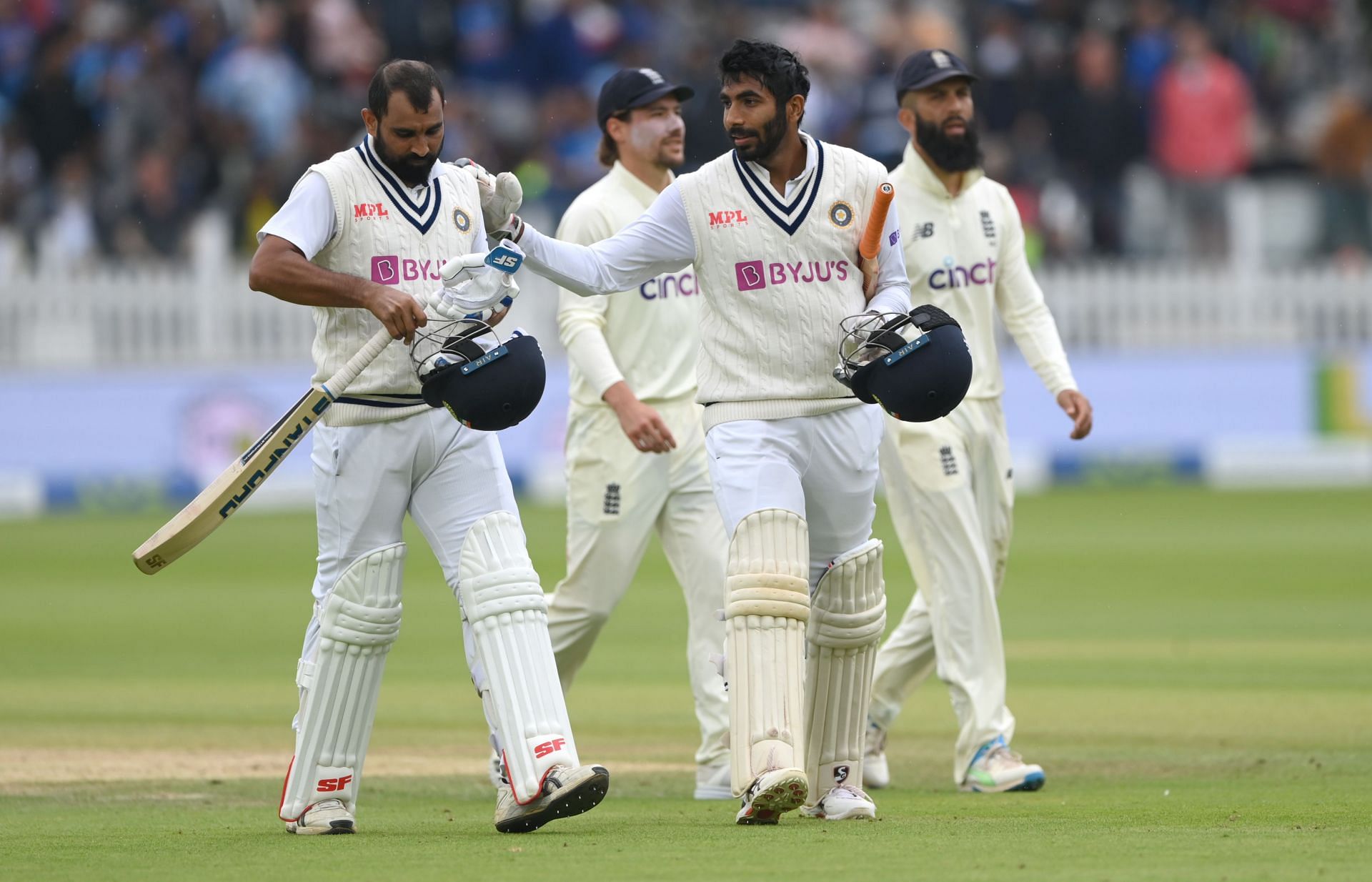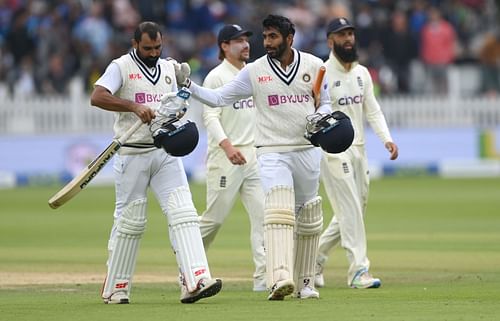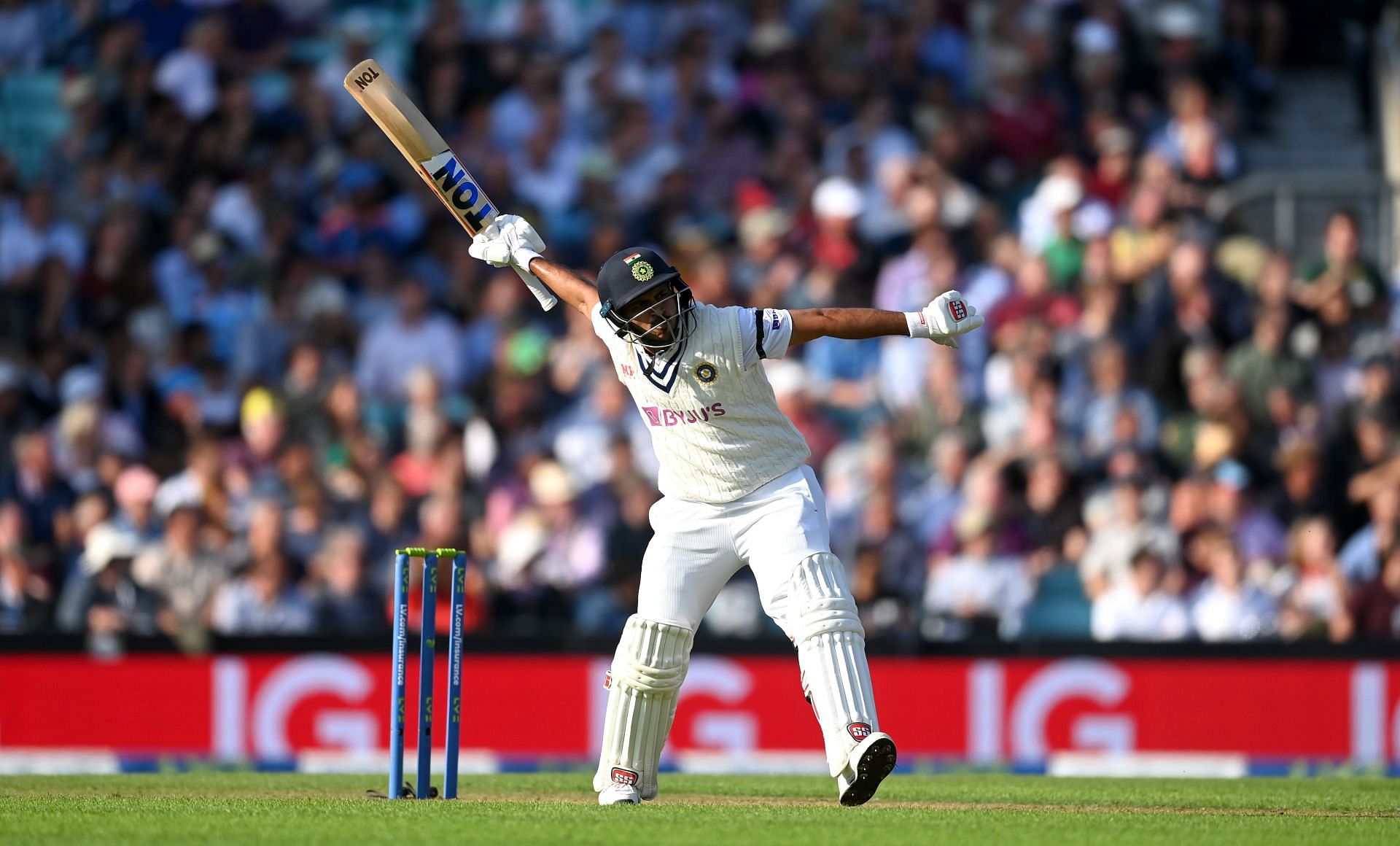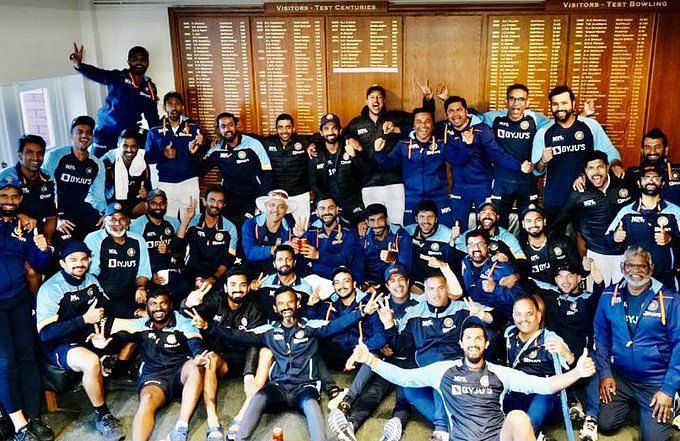
3 reasons why Indian bowlers have been batting so well lately

Gone are the days when 200 for 6 with 10 overs to go in an ODI meant that India were virtually all out. Today the batting line-up runs deep, with many bowlers in the XI capable of being called 'bowling all-rounders'.
Indian cricket's recent wins owe a great deal to how the Indian tail has stood up in times of need. From Shardul Thakur and Jasprit Bumrah to Deepak Chahar and Mohammad Shami, there's no doubt that Indian bowlers have made big contributions to the team in terms of runs.
Sure, Indian bowlers have played crucial innings in the past too. However, those were usually out of the blue, one-off heroic knocks.
These days, Indian bowlers are playing match-winning knocks and building crucial partnerships to help notch up important Test and ODI wins on a regular basis. The most recent example is the record 89-run stand between Shami and Bumrah against England.
On that note, here's a look at three possible reasons that have made this a reality:
#1 Big squads and support staff
With much of the cricket still taking place inside bio-bubbles, the Indian squads are twice as large these days. They are also equipped with an array of net bowlers and throw-down specialists as well as a dedicated batting coach.
These factors indicate that the batting of the team is being looked at on a holistic basis.
The Indian team is arguably the busiest international side. Bi-lateral series are frequent, short and inclusive of all formats. In such an environment, given the shortness of training sessions, it is natural to just focus on the main batters.
That is where the availability of net bowlers and batting specialists comes in handy. It allows Indian bowlers to take their time and work on their batting skills methodically.
Before the India vs England Test series in 2021, then vice-captain Ajinkya Rahane shed some light on why Indian bowlers were contributing significantly to the batting department.
"Bumrah, Shami, Siraj, Umesh and Ishant are putting in the effort in the nets," Rahane had said. "Whatever 20-30 runs we score in end, matters a lot."
"It's good that they are wanting to bat for at least 10-12 minutes in the nets," he had added. "See result comes later and what is important is the process and working hard and contribute as a member of the team. We are hoping for some contributions from our tail-enders."
On a very important side note, holding back net bowlers has proved to be significant in series where the main Indian bowlers get injured. A prominent example of that is the 2020-21 Border-Gavaskar Trophy.
#2 Experience is king for Indian bowlers
Indian bowlers are batting well in big matches, not just because they are training for it but also because they're repeatedly being put into big match situations. Training plays a major role but the role of experience cannot be ignored.
A bowler who plays a crucial knock in one match is likely to repeat that in another crucial one. Case in point here is Shardul Thakur's 67 at the Gabba, which was followed by a 57 at the Oval.

Indian bowlers are regularly being pushed into deep waters, making them habituated to it. The results are evident as more and more Indian bowlers are repeating what were once one-off knocks.
Deepak Chahar is another good example of a bowler taking up batting responsibilities. Chahar scored 69* against Sri Lanka to seal the ODI series for India in 2021.
Chahar also got close to the finish line in the recent 3rd ODI against South Africa, but couldn't cross it. He got out soon after scoring his half-century.
#3 The 'buddy program'
The buddy program is a system where each bowler of the team is paired with a batsman who is their 'buddy'. It works on the principle of working and advancing together; the bowlers help the batters and the batters help the bowlers.
This system was first implemented in the Australian team by then captain Steve Waugh, who was Glenn McGrath's 'buddy'. In India it was first used by former coach John Wright in 2004, but discontinued soon after.

However, former coach Anil Kumble was quick to reintroduce the system in 2016. He 'buddied up' Virat Kohli with Bhuvneshwar Kumar, Rohit Sharma with Stuart Binny, and Cheteshwar Pujara with Amit Mishra.
"We've divided in such a way that batsmen will help bowlers and bowlers will help batsmen, so that whenever we need to play six or seven batsmen, the batsmen can chip in with the ball, bowl seven-eight overs for us," Mishra had said then. "My buddy is Pujara – he bowls a bit of leg spin; he can help me with my batting, and I can help with his leg spin, so that whenever we might need it, he can bowl seven-eight overs for the team and help us."
While it is doubtful whether the system has continued since Kumble left, it's quite certain that the principles of it are still intact. There is an open line of communication between the batters and bowlers now, which benefits both sides.
The Indian tail has certainly proved its batting skill in recent years. Their growth with the bat has provided a cushion to middle-order collapses, and allowed the Indian side to make some important tactical changes in Tests.
While fans would be hoping that the Indian bowlers get fewer opportunities to showcase their talent with the bat, they would certainly feel grateful that they have delivered when asked.
